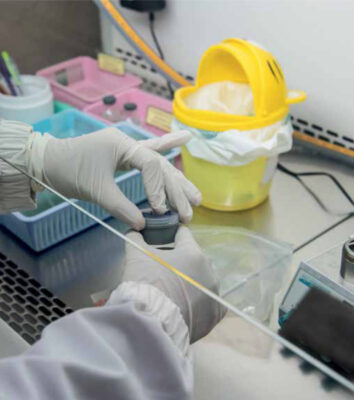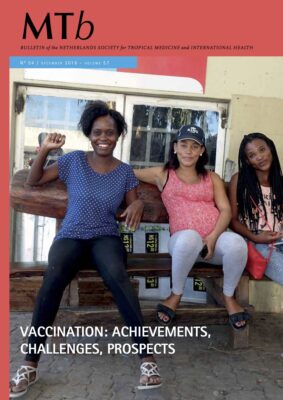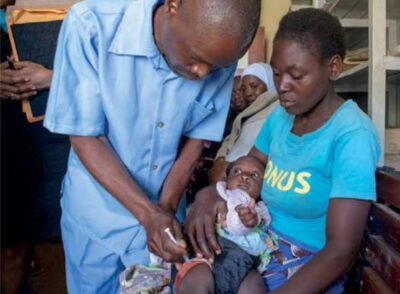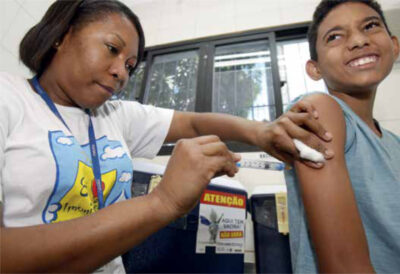

The history of vaccination is rich and full of success stories. It all started in 1768 when an English physician realised that prior infection with cowpox rendered a person immune to smallpox. After several investigations and tests in human beings in the years that followed, it was Edward Jenner, another physician in England, who observed that milkmaids were generally immune to smallpox. He postulated that pus in the blisters that milkmaids developed from cowpox (a disease similar to smallpox, but much less virulent) protected them from smallpox. In 1796, Jenner tested...
The history of vaccination is rich and full of success stories. It all started in 1768 when an English physician realised that prior infection with cowpox rendered a person immune to smallpox. After several investigations and tests in human beings in the years that followed, it was Edward Jenner, another physician in England, who observed that milkmaids were generally immune to smallpox. He postulated that pus in the blisters that milkmaids developed from cowpox (a disease similar to smallpox, but much less virulent) protected them from smallpox. In 1796, Jenner tested his hypothesis by inoculating an eight-year-old boy: he scraped pus from cowpox blisters on the hands of a milkmaid who had caught cowpox from a cow and inoculated the boy in both arms that same day. The boy developed a fever and some uneasiness, but no full-blown infection. The success of Jenner’s discovery soon spread around Europe, with small pox vaccination also being used for traders in their expeditions to the Americas and the Far East. In 1980, following an historic global campaign of surveillance and vaccination, the World Health Assembly declared smallpox eradicated – the only infectious disease so far to achieve this distinction. Polio (poliomyelitis) is another contagious disease that could be eradicated, as there is an effective and inexpensive vaccine providing life-long immunity. The Polio Eradication Initiative is a UN programme with the target of a poliofree world. Initially experts believed this could be achieved by the year 2005, but that proved unrealistic. For a region or continent to be certified as polio-free, there must be no detection of wild poliovirus for three consecutive years as well as an appropriate surveillance system. Recently, polio got one step closer to becoming the second human disease to be fully wiped out. On 24 October 2019, World Polio Day, the World Health Organization announced that type 3 poliovirus has been eradicated worldwide. For polio to be fully eradicated, all three wild polio strains (types 1, 2 and 3) need to stop circulating. The three strains all cause the same horrible symptoms, including paralysis and death, but are virologically distinct. Type 2 was eradicated back in 2015; the last case of type 3 polio surfaced in northern Nigeria in 2012 and the virus hasn’t been seen since. Today, only type 1 remains at large — in Afghanistan and Pakistan. Enormous efforts are being made to finally eradicate polio completely. Many other diseases are being prevented through routine vaccination programmes or through mass vaccination in the event of outbreaks. But there is a whole series of conditions that determine the success of such efforts. In this edition of MTb, you can read about vaccination surveillance in the Netherlands by our National Institute of Health and the Environment (RIVM) – illustrated by the example of maternal pertussis (whooping cough) which was added to the Dutch national immunisation programme in December 2019. The media recently paid a lot of attention to reluctance among the general public in the Netherlands towards vaccination, showing that high coverage rates are not to be taken for granted. Two articles in this edition reflect on what it takes to safeguard high vaccination rates. Two other articles provide insight into global mechanisms to ensure sustainable financing of vaccination programmes (the case of GAVI) and reliable vaccine provision (the case of ICG). The recent approval of an Ebola vaccine (November 2019) made news headlines and several authors refer to it. If you are interested in the latest on vaccine development for TB and malaria, we recommend the first two articles of this edition. Enjoy the reading!
Leon Bijlmakers
Jan Auke Dijkstra





















































